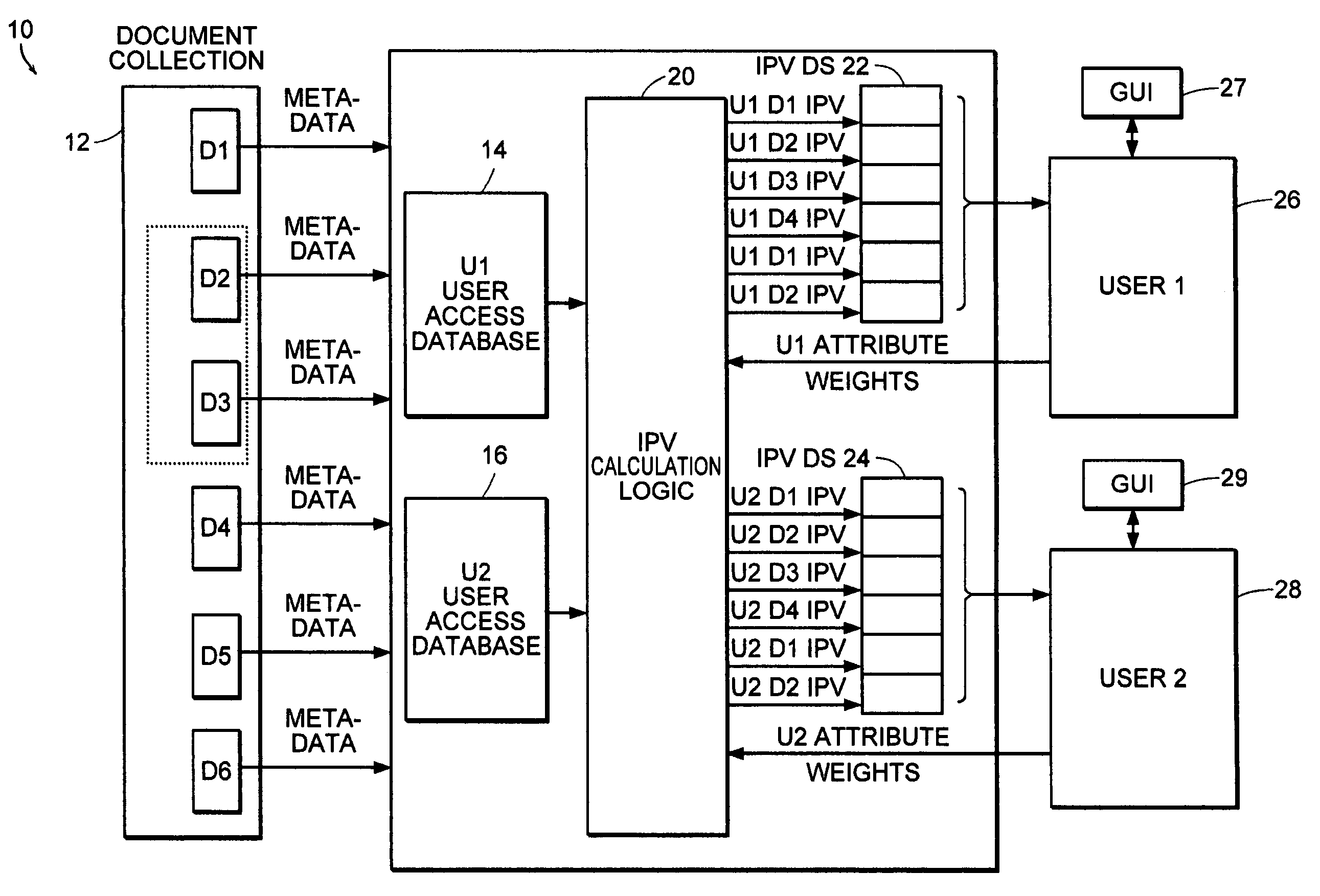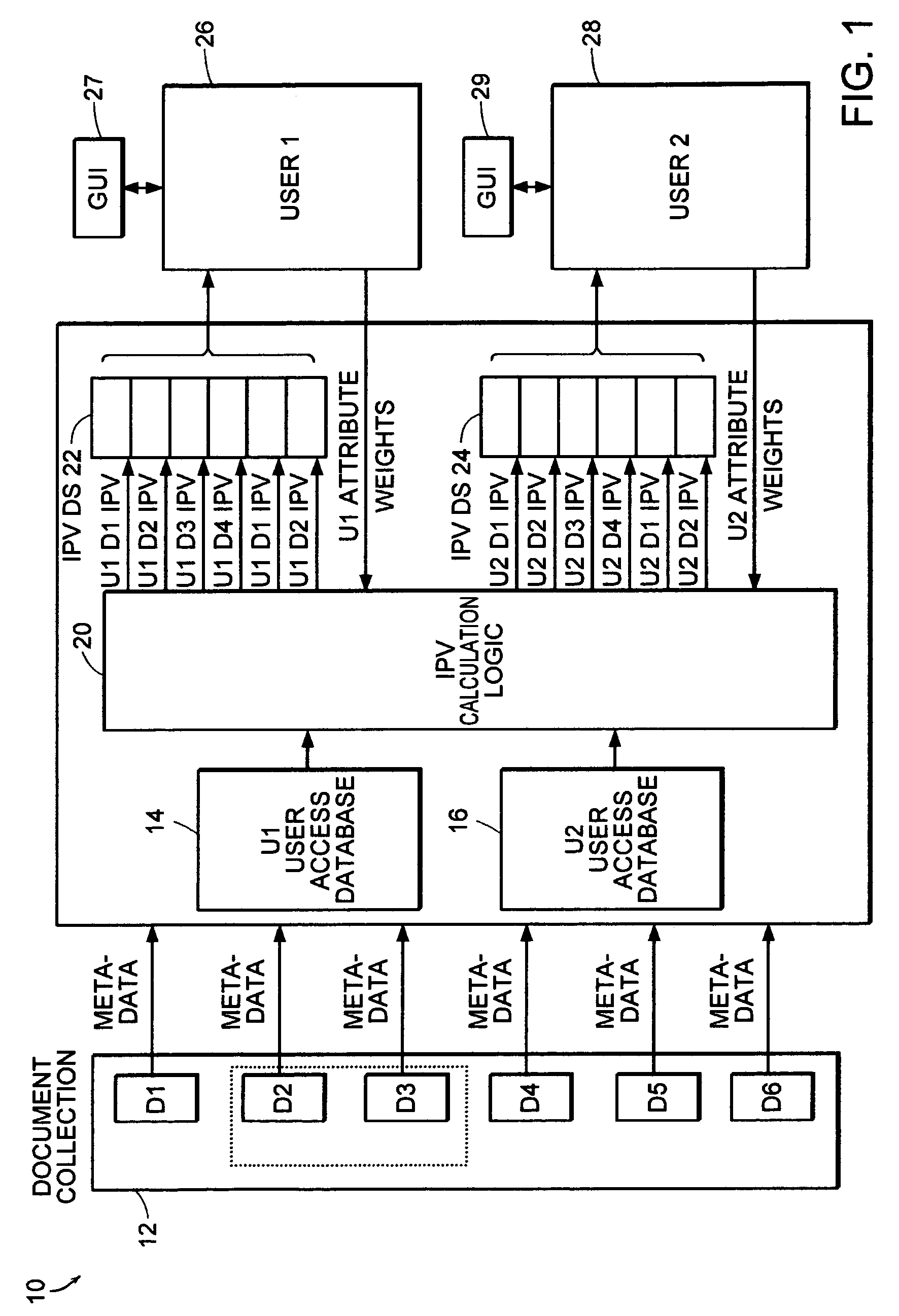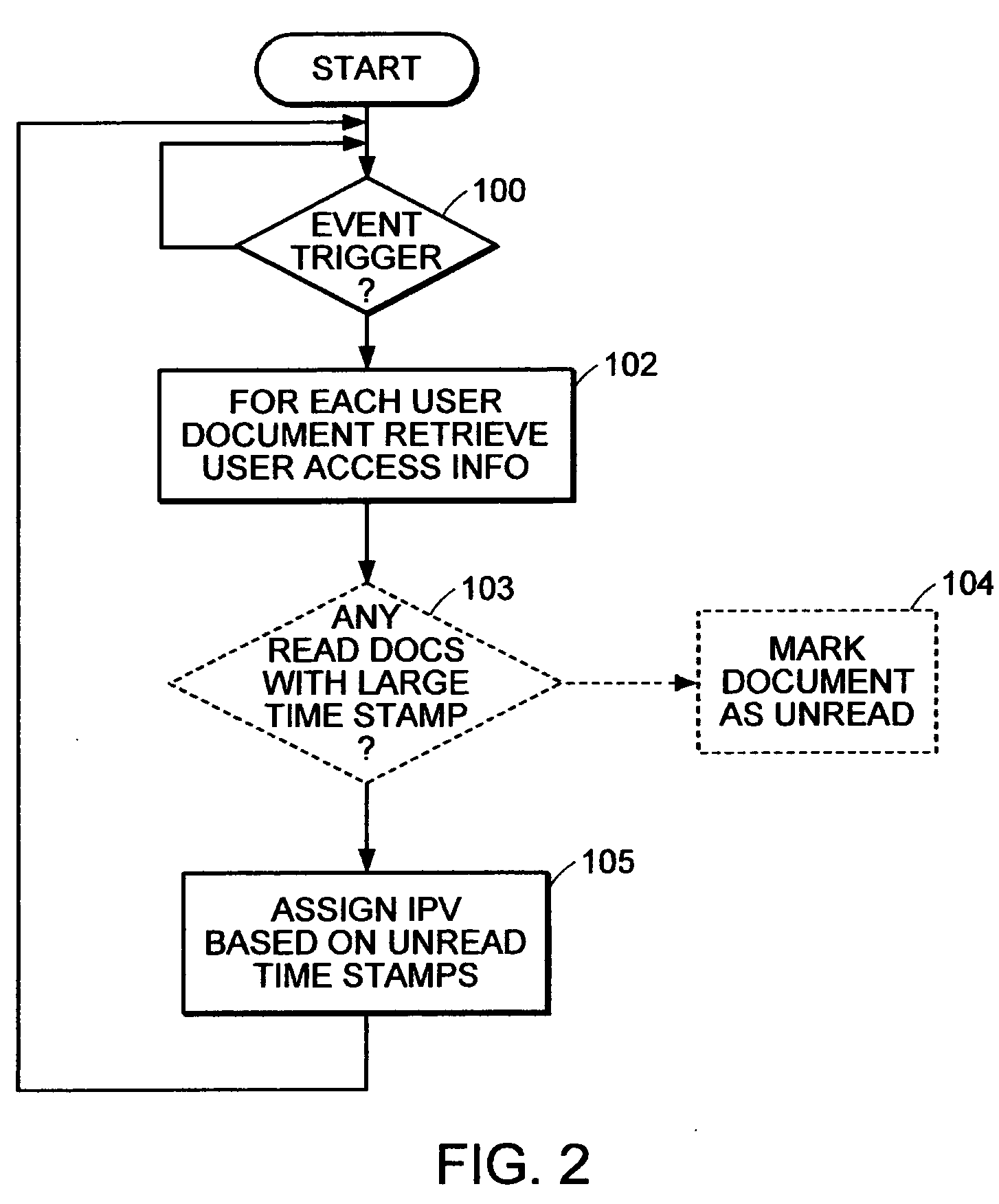Method and apparatus for representing an interest priority of an object to a user based on personal histories or social context
a technology of personal histories or social contexts, applied in the field of object retrieval, can solve problems such as difficulty for professionals to sort through accumulated information and prioritize the reading of information
- Summary
- Abstract
- Description
- Claims
- Application Information
AI Technical Summary
Benefits of technology
Problems solved by technology
Method used
Image
Examples
third embodiment
[0030] Referring now to FIG. 5, a third embodiment is shown of an interest indication system 50, including a user relationship database 18. The user relationship database 18 is used to set a Relationship attribute (R) for each document. The relationship database 18 identifies certain individuals that have a relationship to the user, including, for example, authors that are of interest to the user, superiors to the users, co-workers of the user, or anyone indicated by the user as of interest. When a document is written by one of the individuals in the relationship database, the ‘unreadness’ value of the document increases. Thus, the relationship factor permits a user to flag content that is of interest to the user based on the source of the document.
[0031] Referring now to FIG. 6, a flow diagram is provided for illustrating the steps taken in assigning an IPV based on the relationship database contents. At step 120, an event triggers the update of the IPV. At step 122, the meta data ...
fourth embodiment
[0032] Referring now to FIG. 7, an interest identification system is shown to include a group membership database. The group membership database stores, for a set of one or more documents, the identity of individuals in a group who have access to the documents. In many working environments, teams of users share access to and responsibility for a common set of documents. For example, documents D2 and D3, illustrated in dashed lines, may form a set of documents that is accessed by a common group. When the set of documents is large, it may not be necessary for each member of the group to read every single document, rather it is merely important that the knowledge exists within the group.
[0033] Thus, the present invention includes a Social Filtering-shared responsibility (Ss) attribute, which is calculated using the group membership database 45. The Ss attribute indicates how many other members in a user's group have read a given document. If many members of the group have read the docu...
second embodiment
[0045] It should be noted that the equation I may be modified such that the attributes are weighted, with the individual weights of each attribute being specifiable by the user. In one embodiment, this specification is performed programmatically. In a second embodiment, this specification is made through simple controls in a graphical user interface. In this manner, a particular user can give higher priority to Relationship data than other users. Equation II below illustrates the modification of Equation I to include weights.
IPV=A*WA+C*WC+E*WE+eC*WeC+R*WR+Ss*WSs+Su*WSu+L*WL Equation II:
[0046] Thus, a variety of methods and apparatus have been shown and described for assigning Interest Priority Values (IPVs) to user documents. According to another aspect of the present invention, the IPVs may be used to visually represent the attractiveness of the document to a particular user by translating the IPV value into varying ranges of visual attributes. The visual attribute may be used t...
PUM
 Login to View More
Login to View More Abstract
Description
Claims
Application Information
 Login to View More
Login to View More - R&D
- Intellectual Property
- Life Sciences
- Materials
- Tech Scout
- Unparalleled Data Quality
- Higher Quality Content
- 60% Fewer Hallucinations
Browse by: Latest US Patents, China's latest patents, Technical Efficacy Thesaurus, Application Domain, Technology Topic, Popular Technical Reports.
© 2025 PatSnap. All rights reserved.Legal|Privacy policy|Modern Slavery Act Transparency Statement|Sitemap|About US| Contact US: help@patsnap.com



